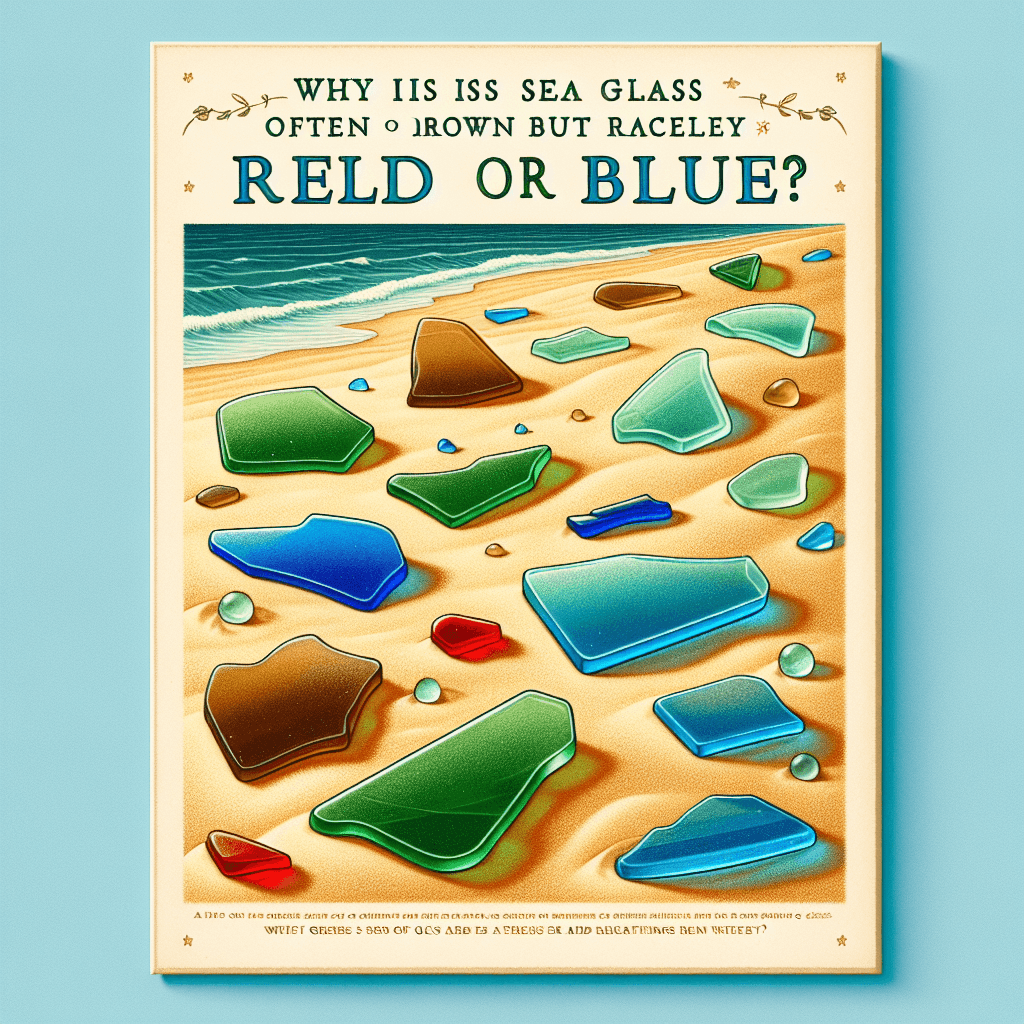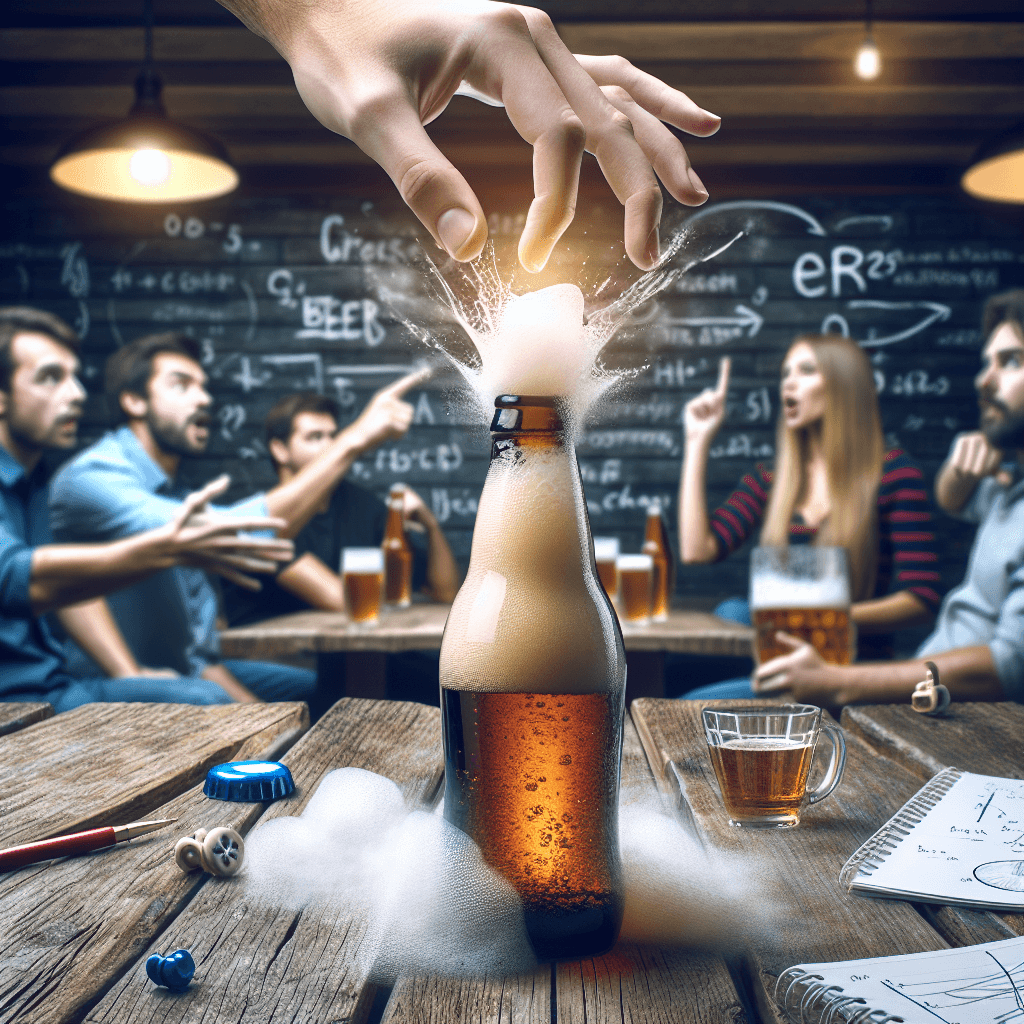Why is sea glass often green or brown but rarely red or blue
The answer has less to do with the ocean and more to do with the surprising history of what we used to put inside those colorful bottles.


Too Long; Didn't Read
TLDR: Sea glass color reflects the original glass's commonality. Green and brown are abundant because they came from mass-produced beer, wine, and soda bottles. Blue was less common, and red was very rare and expensive to make, so it was hardly ever used for disposable items.
Cracking the Color Code: Why Is Sea Glass Often Green or Brown but Rarely Red or Blue?
Strolling along a beach, there's a unique thrill in spotting a smooth, frosted jewel of sea glass nestled among the pebbles. Each piece is a tiny time capsule, tumbled by the waves for decades until its sharp edges are gone, leaving only a soft, matte treasure. But as any beachcomber knows, not all treasures are created equal. You’ll likely fill your pockets with shades of green, brown, and white long before you ever find a single shard of blue, and you could search for a lifetime without ever spotting a fiery red. This isn't just a matter of luck; it's a direct reflection of our own history. This post will delve into the manufacturing and historical reasons that dictate the sea glass color spectrum, explaining why some hues are common finds while others remain the "holy grail" for collectors.
Where Does Sea Glass Come From?
Before we can understand the colors, we must remember the origin of sea glass itself. Every piece began its life as a man-made glass product—a bottle, a jar, a windowpane, or even a car taillight. When this glass was discarded or lost in the sea, the relentless action of the waves, sand, and saltwater began a long, slow process of transformation. The ocean acts as a giant rock tumbler, breaking down, smoothing, and hydrating the glass.
The crucial takeaway is this: the color of sea glass is determined entirely by the color of the original glass object. Therefore, the frequency of a certain color on the beach is a direct echo of how commonly that color of glass was produced and used decades, or even a century, ago.
Green, Brown, and White: The Colors of Utility
The overwhelming majority of sea glass found is green, brown, or white (clear). This is simply because these were the workhorse colors of the glass industry for over a hundred years.
- Brown Glass: This was the go-to color for bottles that needed to protect their contents from UV light, which can spoil products like beer, certain medicines, and chemicals. Think of the millions of beer bottles, Clorox bleach jugs, and Lysol bottles produced. Because they were so ubiquitous and disposable, brown glass is one of the most common finds.
- Green Glass: From the classic Coca-Cola "Georgia Green" bottles to wine, mineral water, and 7-Up bottles, green glass has been a staple of the beverage industry. The green color often comes from the natural iron oxide impurities in the sand used to make the glass, making it an economical choice for mass production.
- White (Clear) Glass: The most versatile color of all, clear glass was used for practically everything else. Food jars for pickles and mayonnaise, milk bottles, medicine jars, and windowpanes were all made from clear glass. While it’s the most common type of glass produced, its frosted appearance can sometimes make it harder to spot on a sandy shore.
The Rarity of Red and the Beauty of Blue: Colors of Specialty
If common colors tell a story of everyday life, rare colors tell a story of luxury, specialty, and unique function. Finding these is rare because the original items were never produced in the same mass quantities.
The Coveted Blues
Cobalt blue is one of the most sought-after colors. Its striking hue comes from adding cobalt oxide to the glass mixture. However, this was a more expensive process, so it was reserved for specific, recognizable products. Sources of cobalt blue sea glass include old Bromo-Seltzer and Milk of Magnesia bottles, Noxzema jars, and poison bottles, which were often colored distinctively to prevent accidents. Because far fewer of these were made compared to beer or soda bottles, cobalt sea glass is a rare find.
The "Holy Grail" Reds
Red is the undisputed king of rare sea glass. True red glass was historically very expensive and difficult to produce. The most famous manufacturing method involved adding gold chloride to the molten glass to create a deep, beautiful "ruby" color. Due to this cost, red glass was used sparingly. It was reserved for luxury items like fine tableware (such as Anchor Hocking’s Royal Ruby line), decorative objects, or critical warning lights on ships, trains, and early automobiles before plastic became the norm. The extreme scarcity of the original red glass products is why finding a piece of genuine red sea glass is a once-in-a-lifetime event for most collectors.
Other rare colors, like orange, yellow, and turquoise, had similarly specialized origins, often in decorative tableware or art glass, making them equally difficult to find.
Conclusion
The colorful spectrum of sea glass is more than just a random assortment; it's a physical record of our consumer history. The common greens and browns are relics of our everyday drinks and medicines, tumbled into frosted gems. The rare blues and reds are fragments of a more specialized past, representing luxury goods or items with a specific, vital function. Each piece tells a story of industry, chemistry, and time. So, the next time you're on the shore, remember that every piece you pick up is a tangible link to the past. While you celebrate the common finds, keep an eye out for that rare flash of blue or red—a true treasure from a time gone by.
More Articles

Why do movie punches sound so much crunchier and louder than real ones?
That sickening, bone-crunching punch you hear in the movies is a lie, and the secret ingredient is probably sitting in your refrigerator right now.

What makes a beer bottle suddenly foam over just from a light tap on top?
It’s not magic, it’s a shockwave; discover the explosive physics that turns a gentle tap on your beer bottle into an instant foamy geyser.

Why do police officers touch the back of a car during a traffic stop?
It’s not a random habit; that simple touch is a calculated, old-school tactic designed to leave a crucial and potentially life-saving piece of evidence behind.